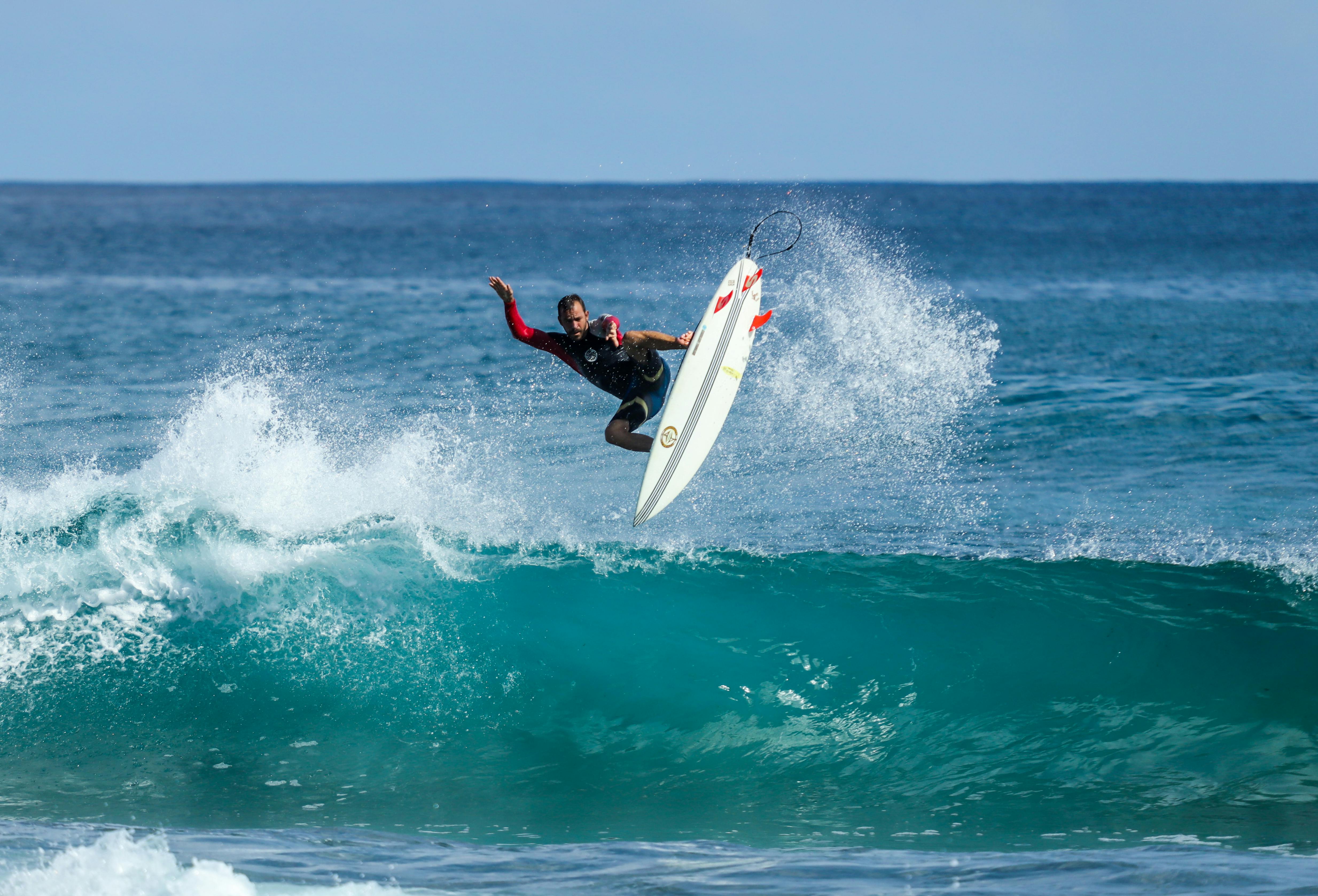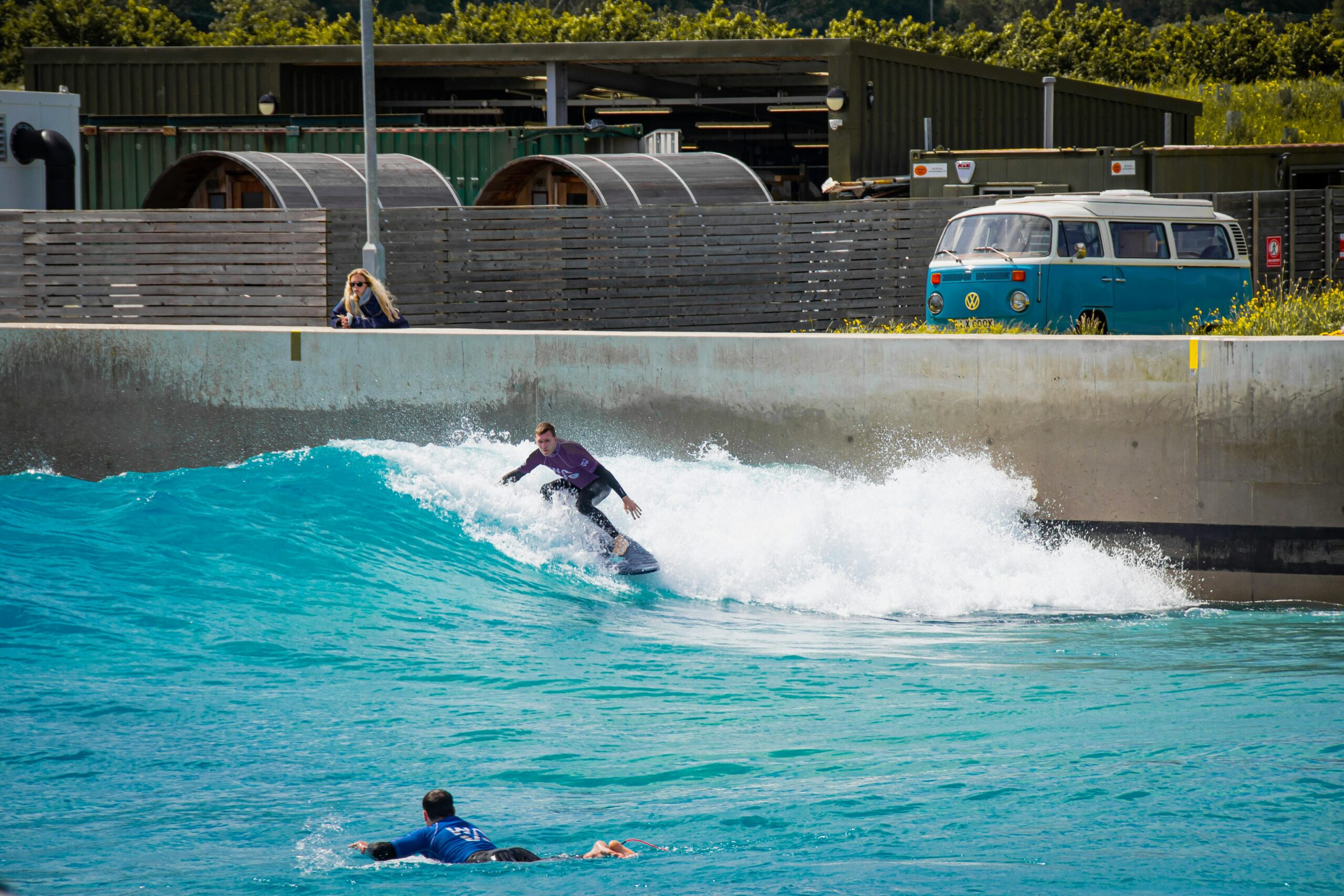The Wave Bristol Closure: What It Means for Local Surfers is a pressing topic that has left many in the surfing community pondering their next moves. The closure of The Wave Bristol, an innovative artificial surfing lake, has sparked conversations about its impact on local surfers and the future of wave riding in the area. For avid surfers, this closure isn’t just about losing a venue; it raises questions about where they will hone their skills and enjoy their passion.
With the artificial wave technology that The Wave Bristol provided, local surfers had access to consistent surf conditions, regardless of the weather. Now, as the news of its temporary closure circulates, many are left wondering: what does this mean for their beloved sport? Will surfers have to rely solely on natural breaks, which can be unpredictable and often crowded? The void left by The Wave Bristol could impact not just individual surfers, but also the local surfing community and economy.
Furthermore, the closure comes at a time when the sport is gaining popularity, with more people than ever keen to ride the waves. This situation creates a sense of urgency among enthusiasts and newcomers alike. What alternatives are available to keep the surfing spirit alive? With a variety of local surf clubs and outdoor activities to consider, there’s still hope for the community. Stay tuned as we explore the implications of The Wave Bristol’s closure and the potential paths forward for local surfers in this ever-evolving landscape.
How the Wave Bristol Closure Impacts Local Surfing Communities: A Deep Dive

The Wave Bristol, a unique inland surf facility, has been a favourite destination for surfers in the region since it opened its doors in 2019. But news of its temporary closure has sent ripples through local surfing communities. Surfers, both amateur and pro, are now left pondering what this means for their sport, their training, and their social interactions. The closure of such a significant facility raises numerous concerns and consequences that reach far beyond just the surfing experience itself.
What Is The Wave Bristol?
The Wave Bristol is an artificial surfing lake that uses advanced technology to create consistent waves. It’s designed for all levels, from beginners to seasoned surfers. It’s not just a surfing spot; it’s also a hub for community engagement and outdoor activities. The facility provides lessons, events, and opportunities for surfers to practice in a controlled environment, making it a vital part of the local surfing culture.
The Impact of the Closure on Local Surfers
Local surfers now find themselves facing a few challenges due to the closure. Here are some of the most significant impacts:
- Training Disruption: Regular practice is crucial for surfers looking to improve their skills. With The Wave closed, local surfers may struggle to find suitable alternatives.
- Community Loss: The Wave served as a gathering place for the surfing community. The absence of this venue could lead to a sense of isolation among local surfers.
- Economic Effects: Local businesses that thrived on the traffic from The Wave might also feel the pinch. Cafes, surf shops, and related services could see a decline in customers.
Alternatives for Local Surfers
While The Wave’s closure is a setback, there are still some alternatives for local surfers to consider. Here’s a list of places and activities that could help bridge the gap:
Natural Beaches: Surfers can head to nearby coastal areas. Some popular spots include:
- Croyde Bay: Known for its powerful waves, perfect for experienced surfers.
- Porthcawl: Offers a variety of waves suitable for different skill levels.
Surf Clubs: Joining local surf clubs can provide structured training sessions and social opportunities. Clubs often organise trips to coastal areas, meaning surfers can still find waves.
Surfing Competitions: Participating in or attending competitions can keep the spirit of surfing alive. These events can be both competitive and social.
Community Responses to The Wave Closure
The surfing community has been vocal about their feelings regarding The Wave Bristol’s closure. Many are not just complaining; they are actively seeking solutions. Some notable community responses include:
- Online Forums and Social Media: Local surfers have taken to platforms to discuss their frustrations and share alternative locations and tips.
- Petitions: Some groups have started petitions urging the management to reconsider the closure or expedite the reopening process.
- Collaborative Events: Surfers are exploring the idea of organising meet-ups at other surfing locations, fostering community spirit despite the closure.
The Future of The Wave Bristol
While it’s unclear how long The Wave will remain closed, the future of this facility is a topic of much discussion. Many are hopeful that it will reopen soon, and there’s potential for improvements and expansions. However, it’s also important to consider:
- Investment in Facilities: The management may need to invest in maintenance and upgrades to ensure a better experience when it reopens.
- Sustainability Practices: There’s a growing call for sustainable practices within surf facilities, which could shape how The Wave operates in the future.
Summary of Key Points
- The Wave Bristol has had a significant impact on local surfing communities since its inception.
- Its closure disrupts training, community interaction, and local economies.
- Alternatives and community initiatives are emerging to help surfers cope.
- The future of The Wave remains uncertain but holds potential for positive change.
As local surfers navigate this challenging period, one thing is clear: the spirit of surfing is resilient. While The Wave Bristol’s closure presents obstacles, the community’s response demonstrates their dedication to the sport and each other. Through collective efforts, they can keep the waves rolling, even in uncertain times.
5 Key Reasons Why the Wave Bristol’s Closure is a Major Concern for Surfers

The recent closure of The Wave Bristol has sent ripples through the surfing community, both locally and beyond. Many surfers are worried about what this means for their favourite sport. The Wave, an artificial surfing lagoon, was not just a surf park; it was a hub for enthusiasts, providing a unique experience that many can’t find elsewhere. Its unexpected closure raises several concerns that go beyond mere inconvenience for local surfers.
1. Loss of a Training Ground
For many surfers, The Wave Bristol served as a key training ground. With consistent wave conditions, it allowed surfers of all skill levels to practice and improve. Unlike natural beaches, where waves can be unpredictable, The Wave’s controlled environment means beginners could learn without the fear of overwhelming surf.
- Training Benefits:
- Predictable conditions for all skill levels
- Safe environment for beginners
- Opportunities for advanced techniques in a controlled space
Surfers now face the challenge of finding alternative spots to practice their skills. Natural beaches can be unreliable, and many might not have access to the same facilities that The Wave provided.
2. Community and Social Impact
Surfing isn’t just about riding waves; it’s about community too. The Wave Bristol was a gathering spot for surfers to meet, share tips, and build friendships. Its closure leads to a diminished sense of community among local surfers.
- Community Losses:
- Fewer local events and competitions
- Decreased opportunities for social interaction
- Loss of a supportive network for beginners
Surfers often rely on each other for motivation and support. Without a central hub, many may feel isolated, especially those who are new to the sport.
3. Economic Consequences
The Wave Bristol was an economic asset for the area, attracting visitors from all over. Its closure can have significant economic ramifications for local businesses that rely on the influx of surfers and tourists.
- Economic Effects:
- Decrease in tourism-related revenue
- Local businesses losing customers
- Job losses in the hospitality and service sectors
Surfers often spend money on food, accommodation, and gear, which means that the closure could lead to a trickle-down effect that harms the local economy.
4. Environmental Considerations
Artificial surf parks like The Wave are designed with sustainability in mind, using less water and energy compared to traditional surfing locations that require extensive beach management. The closure raises questions about the environmental impact of losing such facilities.
- Environmental Points:
- Increased pressure on natural beaches
- Potential for more crowding in other surf spots
- Loss of a sustainable surfing option
With natural beaches becoming overcrowded, environmental concerns such as erosion and pollution could worsen, impacting marine life and the overall health of coastal ecosystems.
5. Limited Access to Surfing for Underprivileged Communities
The Wave Bristol offered accessibility to those who might not have had the opportunity to surf otherwise. Its closure could widen the gap between those who can afford to travel to distant surf spots and those who can’t.
- Accessibility Issues:
- Reduced opportunities for low-income individuals
- Less diversity in the sport
- Barriers for youth participation in surfing
Surfing has the potential to be inclusive, but without facilities like The Wave, many young people may miss out on the chance to engage in this sport, which can be both physically and emotionally rewarding.
In light of these concerns, the closure of The Wave Bristol represents more than just the end of a surf park. It signifies a loss of opportunities for personal growth, community building, and economic stability. Surfers are left to navigate an uncertain future, and many are hoping that solutions can be found to bring back such a vital part of their surfing experience. Whether it’s through community fundraising efforts, new projects, or even a reopening plan, the hope remains that the spirit of surfing will continue to thrive in Bristol.
What’s Next for Bristol’s Surf Scene? Expert Insights on the Wave Closure

Bristol, known for its vibrant culture and artistic scene, has also been quietly making waves in the surfing community. However, the recent closure of The Wave Bristol, a popular inland surfing facility, has left many locals pondering the future of the surf scene in the area. This unexpected turn of events raises numerous questions about what’s next for surfers who have come to rely on this unique wave-making venue.
What Happened to The Wave Bristol?
The Wave Bristol, which opened in 2019, was designed to provide consistent surfing conditions for enthusiasts of all skill levels. It utilized innovative technology to create artificial waves, allowing surfers to enjoy the sport without needing to travel to the coast. Unfortunately, due to financial difficulties and operational challenges, the facility announced its closure in late 2023. This news shocked many, as it was seen as a pivotal part of Bristol’s growing surf culture.
- Established: 2019
- Closure Announced: Late 2023
- Key Features: Artificial wave technology, surf lessons, community events
The Impact on Local Surfers
The closure of The Wave Bristol has been particularly tough on local surfers who rely on the facility for practice and community. Many of them expressed feelings of disappointment and uncertainty about where to surf now. Some key impacts include:
- Loss of Training Ground: Surfers used The Wave for honing their skills and getting ready for competitions. The absence of this facility means they have to travel longer distances for similar experiences.
- Community Disruption: The Wave was not just a surfing venue; it was a gathering place for the local surf community. Events, competitions, and social gatherings were regular occurrences, fostering a sense of belonging among surfers.
- Reduced Accessibility: With fewer options available, new surfers may find it harder to learn the sport, which could hinder the growth of surfing in Bristol.
What Does This Mean for the Future?
The future of Bristol’s surf scene now seems uncertain. Expert opinions vary, but there are some common themes regarding the way forward.
Expert Insights
- Increased Travel: Many local surfers might start heading to coastal areas like Cornwall or Devon for their surfing needs. This could increase travel costs and reduce the frequency of their sessions.
- Emergence of New Venues: Some experts believe that the closure could pave the way for other surf facilities to emerge. Entrepreneurs might see a gap in the market and try to fill it with new wave-making technology.
- Focus on Coastal Surfing: Surfers may start to shift their focus back to traditional coastal surfing, which could lead to increased participation in events and competitions along the British coastline.
What’s Next for the Local Surf Community?
While the closure of The Wave Bristol is undoubtedly a setback, it also presents an opportunity for the local surfing community to adapt and evolve. Here are some potential paths that could be explored:
- Organised Coastal Trips: Local clubs and groups might begin organising trips to coastal areas more frequently. This could encourage a stronger community bond as surfers travel together.
- Alternative Surf Spots: Some surfers might explore lesser-known spots in the Bristol area or nearby rivers that could provide surfing opportunities, albeit less conventional.
- Advocacy for New Facilities: There may be a push from the community for new surf facilities or improvements to existing ones. Local councils and investors might be encouraged to consider the benefits of supporting a thriving surf culture.
Local Surfing Events to Watch
Even with The Wave’s closure, there are still events and competitions that local surfers can look forward to. Some upcoming events include:
- Bristol Surf Film Festival: Celebrating surf culture through film, this festival brings together enthusiasts for screenings and discussions.
- Coastal Competitions: Events in nearby coastal towns will allow Bristol surfers to compete and reconnect with the broader surf community.
As Bristol navigates the aftermath of The Wave Bristol’s closure, it is clear that the spirit of surfing will endure. The local community remains passionate, and with creativity and resilience, they will likely find new ways to embrace the waves, whether that be inland or at the coast. The future might look different, but the love for surfing in Bristol is here to stay.
The Future of Urban Surfing: How Will the Wave Bristol’s Closure Change the Game?

The closure of The Wave Bristol has sent shockwaves through the surfing community, not just in Bristol but across the UK. As one of the few inland surf parks, it provided a unique opportunity for surfers of all levels to catch waves, regardless of their proximity to the coast. Its sudden closure raises questions about the future of urban surfing and what it means for local surfers who relied on this facility for training and recreation.
What Led to The Wave Bristol’s Closure?
The Wave Bristol was known for its innovative wave-generating technology, attracting surfers from all around. However, various factors contributed to its closure which happened earlier this year. These include:
- Financial Struggles: Operating costs and maintenance challenges weighed heavily on the facility.
- Weather Dependence: Unpredictable weather patterns impacted visitor numbers significantly.
- Competition: New surf parks were popping up, diluting the market.
These issues combined meant that the once-thriving surf park could no longer sustain itself, leading to its unfortunate downfall.
Impact on Local Surfers
The closure of The Wave Bristol has profound implications for local surfers. Many relied on the park for consistent wave conditions, which are hard to find elsewhere in the UK. The following points highlight some of the immediate impacts:
- Loss of Training Ground: Many surfers used the facility for practice, especially in winter months when coastal conditions were unsuitable.
- Community Disruption: The Wave Bristol fostered a sense of community among local surfers, and its closure has left a void in social connections.
- Limited Alternatives: With fewer options for urban surfing, local surfers now face longer travel times to reach coastal breaks or other wave facilities.
The Future of Urban Surfing
As the dust settles on The Wave Bristol’s closure, the future of urban surfing is now in question. Urban surfing has been on the rise, but the loss of a key player like The Wave Bristol might change the landscape significantly. Here’s how:
- Increased Demand for Alternatives: Surfers may seek out new inland surf parks, leading to potential growth in the sector.
- Innovation in Wave Technology: The closure might spur competition among existing parks to enhance their offerings, ensuring they attract more visitors.
- Community Initiatives: Local surf clubs and organisations may step up to fill the gap left by The Wave Bristol, offering training sessions and community events.
What Can Surfers Do Now?
For surfers affected by The Wave Bristol’s closure, here are some practical steps to consider:
- Explore Coastal Options: Surfing at local beaches may not provide the same controlled environment, but it can offer natural waves and a different experience.
- Join Local Surf Clubs: Engaging with surf clubs can help surfers stay connected and find opportunities for training and socialising.
- Travel to Other Surf Parks: While it may take time and resources, visiting other inland surf parks can help maintain skill levels.
The State of Urban Surfing in the UK
Urban surfing has been rapidly evolving in recent years, and the closure of The Wave Bristol might be a turning point. Here’s a snapshot of the current landscape:
| Surf Park | Location | Wave Type | Opening Year |
|---|---|---|---|
| The Wave Bristol | Bristol | Artificial | 2019 |
| Surf Snowdonia | Wales | Artificial | 2015 |
| The Wave, London | London | Artificial | 2024 (upcoming) |
| Liquid Leisure | Slough | Artificial | 2014 |
This table illustrates that while The Wave Bristol was a significant player, other facilities continue to thrive or are in development.
Final Thoughts
The closure of The Wave Bristol is more than just a loss of waves; it’s a significant event that may redefine the urban surfing scene in the UK. Surfers must adapt to the new reality, exploring alternatives and embracing the challenges ahead. As the surfing community rallies together, there remains hope that new opportunities will arise, ensuring that the spirit of urban surfing continues to flourish, albeit in different forms.
Surfer’s Perspective: What the Wave Bristol Shutdown Means for Local Talent and Events

The recent closure of The Wave Bristol has sent shockwaves through the local surfing community. For many surfers, it represented more than just a venue; it was a hub of activity, creativity, and competition. The Wave Bristol was the first inland surf facility in the UK, and it was well-known for its artificial waves that attracted both seasoned surfers and beginners alike. With the shutdown, questions arise about what this means for local talent and events.
The Impact on Local Surfers
For many local surfers, The Wave Bristol was a training ground, a place where they could hone their skills year-round, regardless of the unpredictable British weather. The closure of such a facility is likely to have several consequences:
- Loss of Training Opportunities: Without the regular access to quality waves, surfers may find it harder to improve their skills.
- Decreased Local Competitions: The Wave Bristol hosted numerous events, from regional competitions to community surf days. The absence of these events could hinder the growth of local talent.
- Community Disconnect: Surfing is as much about community as it is about the sport itself. The closure means that surfers lose a place to connect, share experiences, and motivate each other.
Historical Context of The Wave Bristol
The Wave Bristol opened its doors in 2019 and quickly became a landmark for surfing in the UK. It was the first inland surf park to use Wavegarden technology, allowing for consistent, surfable waves. The facility was designed to cater to all levels, from complete novices to professional surfers looking to train in a controlled environment.
Some notable features included:
- Variety of Wave Types: The park could produce different kinds of waves, suitable for various skill levels.
- Lessons and Coaching: The Wave offered professional coaching, making it easier for beginners to learn.
- Community Events: The facility frequently hosted events that brought surfers together, fostering a sense of local pride and camaraderie.
What Does the Closure Mean for Local Events?
The closure of The Wave Bristol means a vacuum in the event calendar for local surfers. Before the shutdown, events at the park included:
- Surf competitions
- Charity events
- Surfing workshops
- Youth development programmes
With these gone, local surfers may face several challenges:
- Fewer Competitive Opportunities: Without regular events, up-and-coming surfers may struggle to gain exposure and experience.
- Loss of Sponsorships: Events often attract sponsors looking to support local talent. The closure means potential revenue streams for local surfers are lost.
- Difficulty in Networking: Events are often key for building relationships within the surfing community, which can be critical for career development.
Potential Alternatives for Local Surfers
While the closure is disappointing, local surfers might still have options to pursue their passion. Some potential alternatives to consider include:
- Travel to Other Surf Parks: Surfers may need to travel to other inland surf facilities like The Wave in Cardiff or surf spots along the coast.
- Natural Surf Spots: Exploring natural beaches in Cornwall or Devon might provide an alternative, although conditions can be less predictable.
- Organised Surf Camps: Many surf schools offer camps that can help surfers improve their skills in a guided environment.
The Future of Surfing in Bristol
Despite the closure, the spirit of surfing is unlikely to diminish in Bristol. Many local surfers are already discussing ways to keep the community alive, such as:
- Organising Meetups: Surfers could arrange informal meetups at local beaches to maintain connections.
- Creating Online Communities: Social media groups could help surfers share tips, organise trips, and promote local talent.
- Advocacy for New Venues: Local surfers could begin campaigning for new surf facilities or events to fill the void left by The Wave Bristol.
It’s evident that the shutdown of The Wave Bristol has left a significant hole in the local surfing scene. However, as with many challenges, it can also serve as an opportunity for the community to come together, innovate, and find new ways to nurture talent and enthusiasm for the sport. The resilience of the surfing community might just pave the way for exciting new developments in the future.
Conclusion
In conclusion, the closure of The Wave Bristol marks a significant moment for the local community and water sports enthusiasts alike. This innovative surf park, which opened in 2019, not only provided a unique surfing experience but also contributed to the local economy and fostered a sense of community among its visitors. The reasons behind its closure, including the financial challenges exacerbated by the pandemic, highlight the vulnerabilities faced by leisure facilities in today’s economic climate. As we reflect on the impact of The Wave Bristol, it is essential to advocate for alternative solutions that support local businesses and recreational spaces. Community engagement and support are crucial in exploring possibilities for reopening or repurposing the site. Let us come together to preserve our local leisure opportunities and encourage the development of sustainable, vibrant spaces for future generations.













